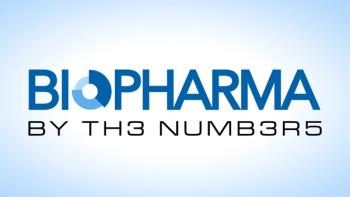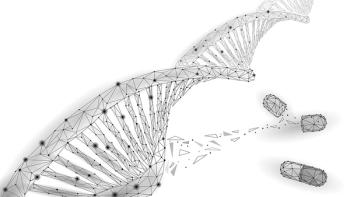
Establishing Risk Assessments for AI in Bio-Manufacturing
Toni Manzano, PhD, Azion, says AI integration in drug manufacturing necessitates regulatory risk assessment, cloud infrastructure for big data, and strict data integrity compliance.
In this part 2 of a 2-part interview regarding the presentation “From Science to Scale: Crossing the Hype Chasm with Industrialized GMP AI in API and Drug Manufacturing” at CPHI Europe 2025, held Oct 28-30 in Frankfurt, Germany, Toni Manzano, PhD, co-founder and chief scientific officer at Aizon, explains that the integration of Artificial Intelligence (AI) into the biopharmaceutical sector, particularly for drug manufacturing processes, is rapidly being addressed by international regulatory bodies. He highlights the current state of guidance, noting that FDA published a draft guideline on using AI for critical decisions in drug manufacturing in January, while Europe has its corresponding draft called Annex 22.
These regulatory efforts demonstrate a commitment and agreement between the US and European regions to base AI implementation on rigorous risk assessment, Manzano notes. This assessment, he says, is defined as the necessary first step and must consider the AI model's impact on the final patient, specifically concerning the quality, safety, and efficiency of the produced drugs. The severity of the risk dictates subsequent actions, Manzano adds. For instance, if an AI model assumes a strategic control role, actively controlling the drug manufacturing process, the risk is deemed very high. Conversely, if the AI merely offers recommendations to the final user to aid decision-making, the risk is considered low.
According to Manzano, implementing AI for strategic control necessitates handling vast, multivariate data sets—including time series (density, O2, pH), events (batch clearance), critical quality attributes (CQA), and critical process parameters (CPP)—which often results in generating gigabytes of data per day. He says to utilize AI effectively for real-time or near real-time feedback that allows for process correction and adjustment, this information must be transmitted and processed efficiently. This requirement drives the need for advanced infrastructure:
"This… cannot be managed by... classical systems,” Manzano notes. “You need power computing. You need unlimited data storage. You need… real time or near real time connectivity. The only system that allows that in an industrial way is cloud."
Consequently, maintaining data integrity becomes paramount, he continues, stressing that good manufacturing practices must prioritize data quality, as all critical decisions are based on data. Compliance requires adherence to data integrity principles, summarized by ALCOA (attributable, legible, contemporaneous, original, and accurate), Manzano notes. He encourages industry organizations to establish a specific organizational role, potentially a chief data officer, to safeguard data consistency and compliance.
Check out
Transcript
*Editor’s Note: This transcript is a direct, unedited rendering of the original audio/video content. It may contain errors, informal language, or omissions as spoken in the original recording.
So, as I mentioned before, in Europe we have the draft for AI in drug manufacturing where we, this draft is called Annex 22 in the FDA. We have a very nice guidelines published in January of this year. So it. Both things are very reason. Believe me. In January, FDA published the draft about how to use AI for making critical decisions in data manufacturing.
So everything is already based. The good point is that we have a commitment and a, an agreement between the two regions between US and Europe based on the risk assessment both. Institutions, both regulatory bodies, both of them, they are describing as the first step you need to, or we need to create a risk assessment considering how the AI model is impacting to the final patient based on the quality, safety, and efficiency of the drugs that we are producing.
Everything is already established and risk assessment is the first step. Based on that, you have to act. Accordingly to the risk level or the impact of the risk for the AI model. For example, if the AI model is interacting with the strategy control in order to be sure that my ongoing process is always under the control, this is, the risk of that is really high because AI is assuming the role of controlling the drug manufacturing process.
But if the AI model is just recommending. To the final user to make the right decision is just a recommendation and the risk is low.
When we work in the real world, we are talking about multiple data, multiple kind of data, we are talking about time series. So we have density, O2 pH, two PO a lot of different sensors providing information every second. We have events, batch line clearance, this CQA, this analysis, this CPP.
So we have plenty of different data that is completely multivariate. It's not only time serious, it's not only err, it's a combination of everything. So we are talking about G Rights per day. Gigabytes per day. And this information needs to be managed in somehow in order to be consumed by ai.
So if we are working with AI as a real strategic control for producing, that means that we have to send this gigabytes of information on real time or near real time to somewhere. To give the feedback coming from the AI systems in order to adjust or set up or correct or fix anything that happens in real time or near real time.
So this, that cannot be managed by on-prem or classical systems. You need power computing. You need unlimited data storage. You need this kind of real time or near real time connectivity. So the only system that allows that in an industrial way is cloud. So this is why we need cloud nowadays.
Actually, you can see what, how the world is moving on. The world needs cloud. We need cloud for everything today. Our money is in the cloud. We need cloud because otherwise we don't have this. Computation capabilities in terms of data storage, power computing, and connectivity.
So in, in regards of good practices in environ manufacturing, the first good practice is to take care of the data. This is the first thing. So nowadays the industry and drug manufacturers, they need a role and specific role in the company, in the organization that is taking care. About the quality of the data.
We produce drugs of course, but we have a lot of knowledge in the data that we produce. We have the capability to understand when the batch is going well or when the batch is not going well based on the data. The site managers, they have the, they have to make the right decision in terms of release the batch or not.
In the quality departments, they have to make the right decisions about which kind of deviation they have to apply or how to resolve the deviation, so on. So at the end, all the most important decisions they are making based on data. So everything is starting data and this is one of the main I would say this is the first thing that we have to do.
As good practices in any industry and specifically in our pharma industry, we have to take care about the quality of the data because everything starts in data. So we need this new role I would say chief data officer or maybe the classical IT departments. They have to take care about this new role, about how we can ensure that the data is consistent and always compliance with the data integrity principles.
Detail means at the end means attributable, legible, contemporaneous, original, and accurate. So that means that this, at least these five attributes on the data needs to be always on top of, in any data. No, we need rule, we need a good practices in the labs in order to be sure that we always apply the same principles.
Newsletter
Stay at the forefront of biopharmaceutical innovation—subscribe to BioPharm International for expert insights on drug development, manufacturing, compliance, and more.





